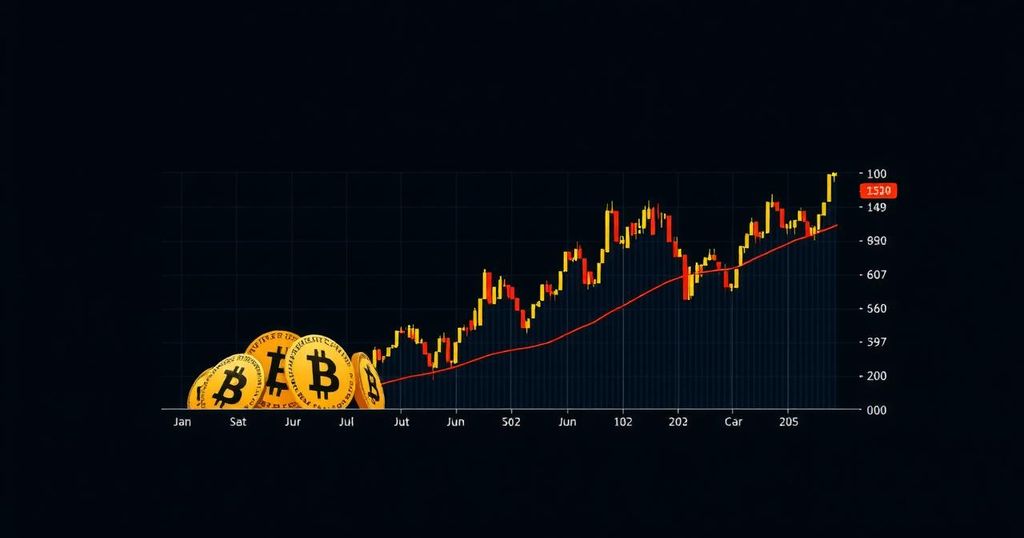Bitcoin’s Expected Volatility Amidst US Interest Rate Decisions
This month, the forthcoming decisions regarding interest rates in the United States are expected to have a substantial impact on both the short-term volatility and long-term direction of Bitcoin (BTC). As reported by Bitfinex Alpha, Bitcoin has experienced a notable increase of over 32 percent since early August, largely driven by trader expectations for dovish remarks from the Federal Reserve.
Potential interest rate cuts could herald the onset of a typical easing cycle, which, historically, has been conducive to price appreciation for Bitcoin, as increased liquidity often alleviates recession apprehensions. In contrast, a more pronounced reduction of 50 basis points may provoke an immediate surge in Bitcoin’s price, although it may be succeeded by a correction in response to heightened recession concerns.
Recent trends indicate that spot holders have been actively de-risking their positions, while perpetual market speculators have sought to capitalize on price declines, exhibiting significant long positions on BTC perpetual contracts. However, Bitfinex Alpha advises caution, forecasting a possible decline of 15 to 20 percent upon the announcement of rate cuts, suggesting that Bitcoin could potentially fall to a range of $40,000 to $50,000. This projection is informed by historical data which indicate that peak returns during cycles diminish by approximately 60 to 70 percent, alongside a decline in average corrections within bull markets.
Historically, the month of September has proven to be particularly volatile for Bitcoin, with an average return of -4.78 percent and observed declines averaging around 24.6 percent from peak to trough. Thus, coupled with the prospect of a “sell-the-news” response to potential rate cuts, significant risks and opportunities may emerge for traders engaged in the cryptocurrency market. Furthermore, Bitcoin’s growing correlation with traditional risk assets, such as the S&P 500, suggests that its price movements will increasingly align with shifts in global macroeconomic conditions.
Global economic developments, including the European Central Bank’s contemplated pause in interest rate hikes, the Bank of Japan’s prudence in responding to a gradually recovering economy, and the People’s Bank of China’s targeted measures to mitigate slowing growth, are anticipated to influence global markets and, by extension, digital assets like Bitcoin. Meanwhile, the U.S. economy continues to experience positive conditions, with ongoing disinflation and robust consumer spending contributing to a favorable economic environment. A recent report indicated that the Federal Reserve’s preferred inflation measure, the Personal Consumption Expenditures (PCE) index, increased by 2.5 percent in July, signifying continued disinflationary trends and price stability.
Despite the prevailing optimism surrounding the economy, the housing sector encountered challenges in July, with pending home sales reaching a historic low amid declining mortgage rates. Nonetheless, there remains cautious optimism, as further declines in mortgage rates and the conclusion of the electoral cycle are expected to rejuvenate market activity. Additionally, consumer confidence in the United States soared to a six-month high in August, driven by an improved economic outlook, albeit concerns regarding the job market persist.
There is an observable trend of increasing political and regulatory engagement within the cryptocurrency sector. Notably, presidential candidate Donald Trump has delineated a strategy aimed at positioning the United States as a global frontrunner in cryptocurrency, particularly through his affiliation with the decentralized finance initiative, World Liberty Financial. Concurrently, the 24X National Exchange has submitted a proposal to U.S. regulators for the establishment of a securities exchange that would facilitate continuous trading of cryptocurrency exchange-traded funds (ETFs).
Moreover, Australia has emerged as a significant player in the global cryptocurrency landscape, witnessing a remarkable seventeen-fold growth in cryptocurrency ATMs over the past two years, thus establishing itself as the third-largest market globally. This rapid expansion has raised regulatory concerns about potential money laundering activities associated with these ATMs, prompting the formation of a multi-agency task force to address such challenges. This situation underscores the ongoing tension between innovation and regulation within the cryptocurrency arena.
In conclusion, as the U.S. navigates important interest rate decisions, both traders and investors must remain vigilant and adaptable to the market’s resultant shifts and overarching global economic conditions.







Post Comment